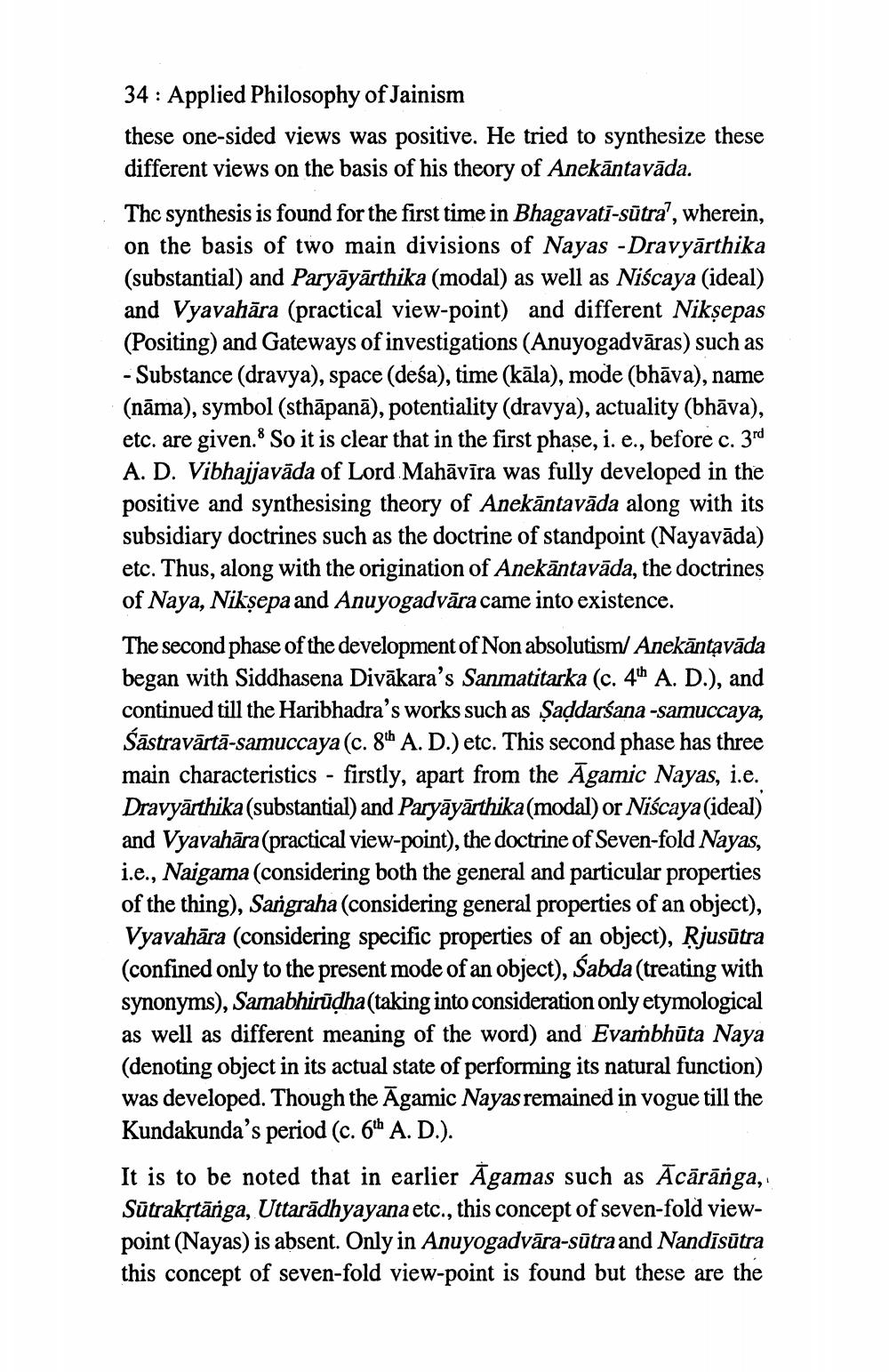________________
34 : Applied Philosophy of Jainism these one-sided views was positive. He tried to synthesize these different views on the basis of his theory of Anekāntavāda. The synthesis is found for the first time in Bhagavati-sūtra', wherein, on the basis of two main divisions of Nayas - Dravyārthika (substantial) and Paryāyārthika (modal) as well as Niścaya (ideal) and Vyavahāra (practical view-point) and different Nikṣepas (Positing) and Gateways of investigations (Anuyogadvāras) such as - Substance (dravya), space (deśa), time (kāla), mode (bhāva), name (nāma), symbol (sthāpanā), potentiality (dravya), actuality (bhāva), etc. are given. So it is clear that in the first phase, i. e., before c. 3rd A. D. Vibhajjavāda of Lord. Mahāvīra was fully developed in the positive and synthesising theory of Anekāntavāda along with its subsidiary doctrines such as the doctrine of standpoint (Nayavāda) etc. Thus, along with the origination of Anekāntavāda, the doctrines of Naya, Niksepa and Anuyogadvāra came into existence. The second phase of the development of Non absolutism/ Anekāntavāda began with Siddhasena Divākara's Sanmatitarka (c. 44h A. D.), and continued till the Haribhadra's works such as Şaddarśana -samuccaya, Šāstravārtā-samuccaya (c. 8th A. D.) etc. This second phase has three main characteristics - firstly, apart from the Āgamic Nayas, i.e. Dravyārthika(substantial) and Paryāyārthika(modal) or Niscaya(ideal) and Vyavahāra(practical view-point), the doctrine of Seven-fold Nayas, i.e., Naigama (considering both the general and particular properties of the thing), Sarigraha (considering general properties of an object), Vyavahāra (considering specific properties of an object), Řjusūtra (confined only to the present mode of an object), Sabda (treating with synonyms), Samabhirūdha(taking into consideration only etymological as well as different meaning of the word) and Evambhūta Naya (denoting object in its actual state of performing its natural function) was developed. Though the Āgamic Nayas remained in vogue till the Kundakunda's period (c. 6h A. D.). It is to be noted that in earlier ,gamas such as Ācārānga, Sūtrakstārga, Uttarādhyayana etc., this concept of seven-fold viewpoint (Nayas) is absent. Only in Anuyogadvāra-sūtra and Nandīsūtra this concept of seven-fold view-point is found but these are the




